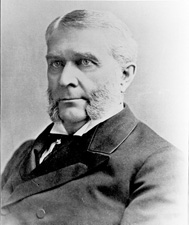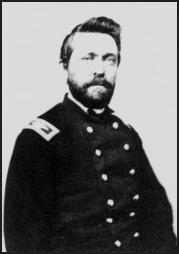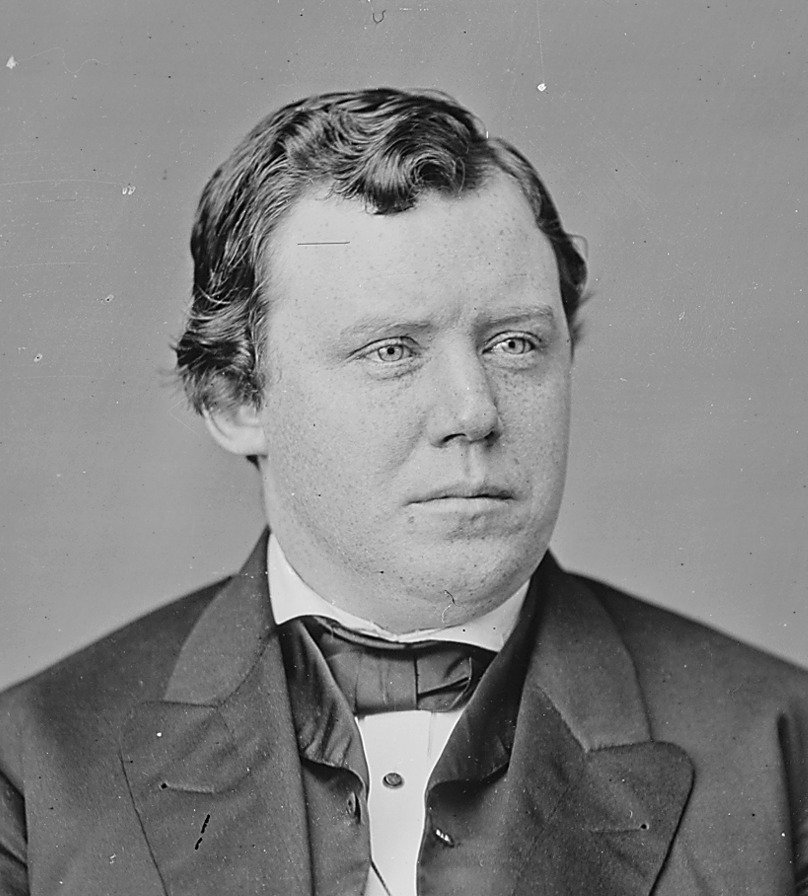|
United States House Of Representatives Elections In Minnesota, 2008
The 2008 Minnesota U.S. House of Representatives elections took place on November 4, 2008. All 8 congressional seats that make up the state's delegation were contested. Representatives were elected for two-year terms; those elected served in the 111th United States Congress from January 4, 2009 until January 3, 2011. The 2008 presidential election, 2008 Senate election (for the seat held by Republican Norm Coleman), and 2008 Minnesota Legislature elections occurred on the same date, as well as many local elections and ballot initiatives. The 110th congressional delegation from the U.S. state of Minnesota had three Republicans and five Democratic-Farmer-Labor Party members (DFLers). Six were men; two were women. Three were freshmen in the 110th congress. The veterans ranged in experience from Jim Oberstar with 33 years of experience and the chairman of the Transportation Committee, to John Kline with just four years of experience. Overview Statewide By district R ... [...More Info...] [...Related Items...] OR: [Wikipedia] [Google] [Baidu] |
United States House Of Representatives
The United States House of Representatives, often referred to as the House of Representatives, the U.S. House, or simply the House, is the Lower house, lower chamber of the United States Congress, with the United States Senate, Senate being the Upper house, upper chamber. Together they comprise the national Bicameralism, bicameral legislature of the United States. The House's composition was established by Article One of the United States Constitution. The House is composed of representatives who, pursuant to the Uniform Congressional District Act, sit in single member List of United States congressional districts, congressional districts allocated to each U.S. state, state on a basis of population as measured by the United States Census, with each district having one representative, provided that each state is entitled to at least one. Since its inception in 1789, all representatives have been directly elected, although universal suffrage did not come to effect until after ... [...More Info...] [...Related Items...] OR: [Wikipedia] [Google] [Baidu] |
John Kline (politician)
John Paul Kline Jr. (born September 6, 1947) is an American politician who served as a member of the United States House of Representatives from from 2003 to 2017. The district included most of the southern suburbs of the Twin Cities. A member of the Republican Party, Kline served as the Chairman of the House Committee on Education and the Workforce from 2011 until 2017. Kline retired from Congress at the end of his term in January of 2017. Early life and education Kline was born in Allentown, Pennsylvania, the son of Litta Belle (née Rodman) and John Paul Kline, Sr. He is a 1965 graduate of W. B. Ray High School in Corpus Christi, Texas. He earned a B.A. in biology at Rice University in 1969 and a Master of Public Administration from Shippensburg University of Pennsylvania in 1988. Career Before his election to Congress, Kline was a 25-year career commissioned officer in the U.S. Marine Corpos, where he was a senior military aide to Presidents Carter and Reagan and was re ... [...More Info...] [...Related Items...] OR: [Wikipedia] [Google] [Baidu] |
Minnesota's 7th Congressional District
Minnesota's 7th congressional district covers the majority of western Minnesota. It is by far the state's largest district, and has a very rural character. Except for a few southern counties in the 1st district, the 7th includes almost all of Western Minnesota. Cities in the district include Moorhead (its largest city), Fergus Falls, Alexandria and Willmar. The 7th is the most Republican district in Minnesota, and is currently represented by Republican Michelle Fischbach. Despite this, the district was represented by DFL member Collin Peterson for 30 years (from 1991 to 2021), who was considered one of the most conservative Democrats in the House. Demographics According to the APM Research Lab's Voter Profile Tools (featuring the U.S. Census Bureau's 2019 American Community Survey), the district contained about 501,000 potential voters (citizens, age 18+). Of these, 91% are White and 9% are people of color. Immigrants make up 2% of the district's potential voters. Media ... [...More Info...] [...Related Items...] OR: [Wikipedia] [Google] [Baidu] |
Minnesota's 6th Congressional District
Minnesota's 6th congressional district includes most or all of Benton County, Minnesota, Benton, Carver County, Minnesota, Carver, Sherburne County, Minnesota, Sherburne, Stearns County, Minnesota, Stearns, Wright County, Minnesota, Wright, Anoka County, Minnesota, Anoka, and Washington County, Minnesota, Washington counties. Many of the Minneapolis-Saint Paul, Twin Cities' northern and northwestern suburbs are included within the boundaries of this district, such as Blaine, Minnesota, Blaine (the district's largest city), Andover, Minnesota, Andover, Ramsey, Minnesota, Ramsey, St. Michael, Minnesota, St. Michael-Albertville, Minnesota, Albertville, Elk River, Minnesota, Elk River, Lino Lakes, Minnesota, Lino Lakes, Forest Lake, Minnesota, Forest Lake, Otsego, Minnesota, Otsego, Buffalo, Minnesota, Buffalo, Anoka, Minnesota, Anoka, Ham Lake, Minnesota, Ham Lake, Hugo, Minnesota, Hugo, Monticello, Minnesota, Monticello, Waconia, Minnesota, Waconia, East Bethel, Minnesota, East B ... [...More Info...] [...Related Items...] OR: [Wikipedia] [Google] [Baidu] |
Minnesota's 5th Congressional District
Minnesota's 5th congressional district is a geographically small urban and suburban congressional district in Minnesota. It covers eastern Hennepin County, including the entire city of Minneapolis, along with parts of Anoka and Ramsey counties. Besides Minneapolis, major cities in the district include St. Louis Park, Richfield, Crystal, Robbinsdale, Golden Valley, New Hope, Fridley, and a small portion of Edina. It was created in 1883, and was nicknamed the "Bloody Fifth" on account of its first election. The contest between Knute Nelson and Charles F. Kindred involved graft, intimidation, and election fraud at every turn. The Republican convention on July 12 in Detroit Lakes was compared to the historic Battle of the Boyne in Ireland. One hundred and fifty delegates fought over eighty seats. After a scuffle in the main conference center, the Kindred and Nelson campaigns nominated each of their candidates. The district is strongly Democratic, with a Cook Partisan Votin ... [...More Info...] [...Related Items...] OR: [Wikipedia] [Google] [Baidu] |
Minnesota's 4th Congressional District
Minnesota's 4th congressional district covers nearly all of Ramsey County, and part of Washington County. It includes all of St. Paul, and most of its suburbs. The district is solidly Democratic, with a CPVI of D+14. It is currently represented by Betty McCollum, of the Minnesota Democratic-Farmer-Labor Party (DFL). The DFL has held the seat without interruption since 1949, and all but one term (1947-1949) since the merger of the Democratic and Farmer-Labor Parties. List of members representing the district Elections Election results from recent statewide races Statewide election voting Historical district boundaries See also *Minnesota's congressional districts *List of United States congressional districts Congressional districts in the United States are electoral divisions for the purpose of electing members of the United States House of Representatives. The number of voting seats in the House of Representatives is currently set at 435, wit .. ... [...More Info...] [...Related Items...] OR: [Wikipedia] [Google] [Baidu] |
Minnesota's 3rd Congressional District
Minnesota's 3rd congressional district encompasses the suburbs of Hennepin, Carver, and Anoka counties to the west, south, and north of Minneapolis. The district, which is mostly suburban in character, includes a few farming communities on its far western edge and also inner-ring suburban areas on its eastern edge. The district includes the blue collar cities of Brooklyn Park and Coon Rapids to the north-east, middle-income Bloomington to the south, and higher-income Eden Prairie, Edina, Maple Grove, Plymouth, Minnetonka, and Wayzata to the west. Democrat Dean Phillips currently represents the district in the U.S. House of Representatives, after defeating incumbent Republican Erik Paulsen in the November 2018 mid-term elections. Statewide election voting List of members representing the district Recent elections 2020 2018 2016 2014 2012 2010 2008 2006 2004 2002 2000 Historical dis ... [...More Info...] [...Related Items...] OR: [Wikipedia] [Google] [Baidu] |
Minnesota's 2nd Congressional District
Minnesota's 2nd congressional district (current) covers the south Twin Cities metro area and contains all of Scott, Dakota, Goodhue, and Wabasha counties. It also contains part of northern and eastern Rice County including the city of Northfield, and southern Washington County including the city of Cottage Grove. Lakeville and Eagan are the largest cities in the district. Historically, for many decades in the mid 20th century the 2nd congressional district covered the southwest corner of the state, while the 1st congressional district covered most of this part of the state. Three of Minnesota's most important rivers run through the district, the Mississippi River, the Minnesota River, and the St. Croix River. Interstate highways I-35 E and I-35 W merge in the district in addition to the north–south thoroughfares of U.S. Routes 169, 61, and 52 and the east–west Route 212. The suburban areas in the northern part of the district blend into the rural farmland in ... [...More Info...] [...Related Items...] OR: [Wikipedia] [Google] [Baidu] |
Minnesota's 1st Congressional District
Minnesota's 1st congressional district extends across southern Minnesota from the border with South Dakota to the border with Wisconsin. It is a primarily rural district built on a strong history of agriculture, though this is changing rapidly due to strong population growth in the Rochester combined statistical area. The district is also home to several of Minnesota's major mid-sized cities, including Rochester, Mankato, Winona, Austin, Owatonna, Albert Lea, New Ulm, and Worthington. It was represented by Republican Jim Hagedorn of Blue Earth from 2019 until his death on February 17, 2022. From early statehood until after the 2000 census, the district covered only southeast Minnesota. During the 20th century, it was generally considered solidly Republican, but it became more of a swing district in the late 20th to early 21st century. In 2004, John Kerry received 47% of the vote in the district. In 2006, Republican Representative Gil Gutknecht lost to Democrat Tim Walz. In Ma ... [...More Info...] [...Related Items...] OR: [Wikipedia] [Google] [Baidu] |
Minnesota Democratic–Farmer–Labor Party
The Minnesota Democratic–Farmer–Labor Party (DFL) is the Minnesota affiliate of the U.S. Democratic Party. As of 2022, it controls four of Minnesota's eight U.S. House seats, both of its U.S. Senate seats, the Minnesota House of Representatives, and all other statewide offices, including the governorship. Beginning in 2023, the party will also control the Minnesota Senate, giving it full control of state government. The party was formed by a merger between the Minnesota Democratic Party and the Minnesota Farmer–Labor Party in 1944. The DFL is one of two state Democratic Party affiliates with a different name to the national party, the other being the North Dakota Democratic–Nonpartisan League Party. History The DFL was created on April 15, 1944, with the merger of the Minnesota Democratic Party and the larger Farmer–Labor Party. Leading the merger effort were Elmer Kelm, the head of the Minnesota Democratic Party and the founding chairman of the DFL; Elmer Be ... [...More Info...] [...Related Items...] OR: [Wikipedia] [Google] [Baidu] |
Minnesota's Congressional Districts
Minnesota is currently divided into eight congressional districts, each represented by a member of the United States House of Representatives. After the 2010 census, the number of Minnesota's seats remained unchanged. Minnesota statutes do not require candidates for the United States House of Representatives to reside in the district in which they run for office, but candidates must be inhabitants of the state at the time of the election. Current (until 2023 inauguration) districts and representatives List of members of the Minnesotan United States House delegation, their terms, their district boundaries, and the districts' political ratings according to the CPVI. The delegation has a total of eight members, consisting of four Democrats and four Republicans. Historical and present district boundaries Table of United States congressional district boundary maps in the State of Minnesota, presented chronologically. All redistricting events that took place in Minnesota between ... [...More Info...] [...Related Items...] OR: [Wikipedia] [Google] [Baidu] |
Write-in Candidate
A write-in candidate is a candidate whose name does not appear on the ballot but seeks election by asking voters to cast a vote for the candidate by physically writing in the person's name on the ballot. Depending on electoral law it may be possible to win an election by winning a sufficient number of such write-in votes, which count equally as if the person was formally listed on the ballot. Writing in a name that is not already on the election ballot is considered a practice of the United States. However, some other jurisdictions have allowed this practice. In the United States, there are variations in laws governing write-in candidates, depending on the office (federal or local) and whether the election is a primary election or the general election; general practice is an empty field close by annotated to explain its purpose on the ballot if it applies. In five U.S. states there are no elections to which it can apply, under their present laws. Election laws are enacted by each ... [...More Info...] [...Related Items...] OR: [Wikipedia] [Google] [Baidu] |







